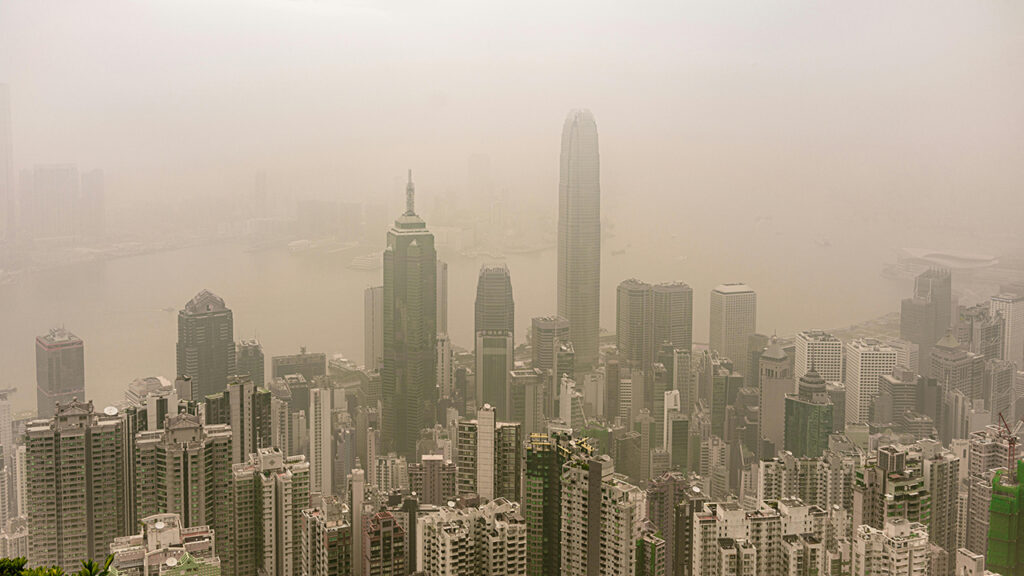
East Asia: What is the link between air pollution and global warming?
A new international study, co-authored by the National Centre for Atmospheric Science, has found that recent monumental efforts to reduce air pollution in East Asia may have inadvertently contributed to a noticeable acceleration in global warming since 2010.
Published in Communications Earth and Environment, the study draws on advanced climate simulations from eight modelling teams worldwide. It shows that as countries like China have significantly reduced air pollution to protect public health, they have also inadvertently removed an “artificial sunshade” that had previously offset some of the warming caused by greenhouse gas emissions.
From clean air to a warming planet
For decades, air pollution – particularly sulfate aerosols from burning fossil fuels – has helped cool the Earth’s surface by reflecting sunlight back into space. The Intergovernmental Panel on Climate Change estimated in 2021 that aerosols had a net cooling effect of about 0.4°C globally.
However, starting in the early 2010s, East Asia began implementing strict air quality policies that are vital for human health. China, where air pollution is responsible for approximately one million premature deaths each year, has led the change. These efforts have resulted in a dramatic 75% reduction in sulphur dioxide emissions over the past 15 years.
Professor Laura Wilcox, contributing author and associate professor at the University of Reading and NCAS, explains:
“Since around 2010 global warming has picked up pace, leading to the recent string of record warm years. Why this is happening is still unclear, and among the biggest questions in climate science today. One factor that has not been well quantified is the impact of efforts by countries in East Asia, notably China, to combat air pollution and improve public health through strict air quality policies – an effort that picked up pace right at the time when global warming began accelerating. In our new study, we address the link between East Asian air quality improvements and global temperature, and find that cleaner air may well now be revealing more of the human induced global warming from greenhouse gases.”
Quantifying the impact
The research team used 160 simulations from global climate models to isolate the effect of East Asian aerosol reductions on global climate. The results suggest that this clean-up has led to an additional 0.07°C of global warming. Seemingly small, this increase is enough to account for much of the recent rise in global temperatures beyond what long-term trends would predict.
Since 2010, the Earth has warmed by around 0.33°C, compared to the expected 0.23°C. This extra 0.1°C of warming aligns closely with the timing and magnitude of East Asia’s air pollution controls.
Lead author Dr Bjørn Samset, from the CICERO Centre for International Climate Research, said: “Our main result is that the East Asian aerosol clean-up has likely driven much of the recent global warming acceleration, and also warming trends in the Pacific.”
The study also highlights how the reduction in air pollution has affected cloud formation and reflectivity, particularly over the North Pacific, further amplifying warming in regions downwind from East Asia.
Greenhouse gases remain the main driver of climate change
While the findings help explain why global temperatures have risen more rapidly in recent years, researchers emphasise that the main driver of climate change remains greenhouse gas emissions.
Looking forward, global warming will continue in response to our past and future emissions of greenhouse gases – which will affect the climate for centuries.
The relatively quick clean-up of air pollution in East Asia, although it reduces the cooling mask, is both necessary and long overdue to protect human health. And as aerosol levels stabilise, the pace of warming is expected to return to the longer-term trend driven by greenhouse gases.
“The climate effects of air pollution are short-lived, while the impact of carbon dioxide emissions can be felt for centuries. This means that the acceleration of warming due to reductions in air pollution is also likely to be short-lived. The findings from our research are a stark reminder that climate change is a multifaceted challenge,” said Laura Wilcox. “We need to continue cutting air pollution for health reasons, while rapidly reducing greenhouse gas emissions to limit long-term warming.”
